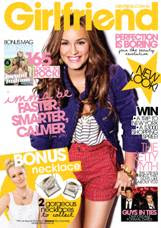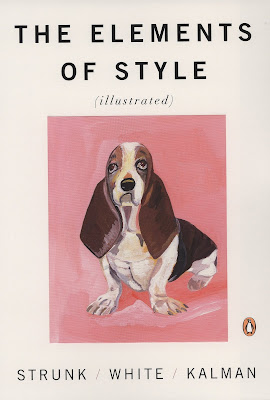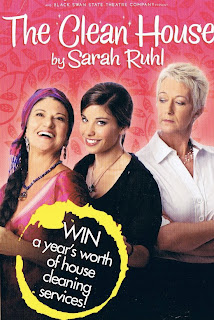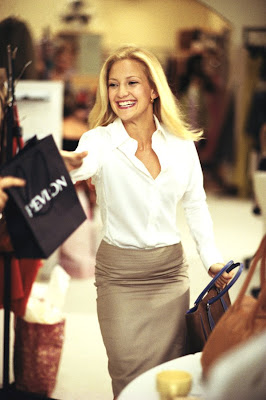The Australian Women's Weekly's editor
 Helen McCabe makes it clear there was no shilly-shallying around when it came to presenting Julia Gillard on her cover. Not for The Weekly suggestions that the glossy might play a part in Labor electoral propaganda with the insinuation that a (deputy) Gillard cover was in the bag before the leadership spill: "it is a coincidence that Julia Gillard is on our cover during what will be a tightly fought campaign. Our cover is not intended to be an endorsement of her or her government... It is not The Weekly's role to back a leader, but it is our job to ask questions and to bring you the stories about the people who shape this nation."
Helen McCabe makes it clear there was no shilly-shallying around when it came to presenting Julia Gillard on her cover. Not for The Weekly suggestions that the glossy might play a part in Labor electoral propaganda with the insinuation that a (deputy) Gillard cover was in the bag before the leadership spill: "it is a coincidence that Julia Gillard is on our cover during what will be a tightly fought campaign. Our cover is not intended to be an endorsement of her or her government... It is not The Weekly's role to back a leader, but it is our job to ask questions and to bring you the stories about the people who shape this nation."We are also reminded that The Weekly ran a feature on opposition leader Tony Abbott in February (but not that Gillard also featured in December), that Gillard was faced with equally tough questioning (on God, on abortion, on childlessness, on marriage, on her alleged affair with Craig Emerson) and that the photographs of Gillard are mostly true-to-life: "We have not changed Ms Gillard's hair or removed one wrinkle. These pictures are beautiful because of great lighting and a talented photographer, makeup artist, hairdresser and stylist, and that is how Ms Gillard looked on the day."
So there.

Of course, things got interesting when The Weekly went on sale the very day that Gillard had to face rumours about her 'real' (un-Photoshopped) opinions on paid parental leave and the pension increase. In a timely fashion, a trip to Gillard's hometown in Adelaide was organised, during which time she dismissed the cabinet leak as "just a bit of silly carry-on", had a coffee with a local pollie and greeted prideful old ladies in the street (one who said, "I saw your pictures in The Weekly, they're lovely").
Gillard's immaculate transformation from hard-looking, tough-talking deputy with a barren fruitbowl to the groomed, poised, attractive lady we see in The Weekly's pages is nothing short of a PR miracle. You might think Gillard would look disconcertingly out of context amongst the pages of recipes and advice on family, menial and house-wifely matters, but she doesn't. Perhaps that is testament to good styling, flattering lighting or crafty PR. Or her deftness in the communication department. Hopefully, it is more about respecting a woman's right to choose her own path and look a-bit-alright regardless of your political (or religious) persuasions. Lucy Brook shares some of her thoughts on the issue...
The Gillard Cover Spread
The 4000-word Weekly profile by Associate Editor Bryce Corbett, which, as Sally Jackson reported in Monday’s Australian, includes an exclusive photo shoot that “will give Ms Gillard and Labor free national exposure to more than two million readers, almost all of them women voters”, is a pleasing behind-the-scenes package, complete with candid snaps and some lovely description (Gillard, snug in a pink hoodie with her feet propped up on a coffee table, gets grilled about marriage: gold) that’s unlikely to minimise the frenzy sparked by the latest leaks.
Several excerpts from the interview are making their way around the 'net, but this segue from Corbett is loaded: "It could be argued that Tim – for whom there is no doubt she cares deeply – is nice to have around, but he's not strictly necessary. Julia is a lone wolf, unweakened by association or ties. There's no way she can be let down by a philandering husband because she doesn't have one. There's no possibility of being embarrassed by a wayward child because she doesn't have any."
This bothers me. Are they the only choices women have? Be in an (implied: non-committal, unnecessary) de-facto partnership or be married to a "philandering husband"? Be a "lone wolf" or be "embarrassed"? Sorry to do be a nit-picky feminist, but no one sits around suggesting that Oprah is on shaky ground because she is unmarried and childless. No one implies that because of that, Oprah might do a crap job on her show, or for her charities. Or that her partner is disposable because they haven't officially tied the knot.
Elsewhere... The Good Bits

• Heralding the arrival of the Industry Code of Conduct on Body Image, Helen McCabe’s editor’s letter includes a frank disclosure of The Weekly’s use of Photoshop – “We do use these techniques because we want to bring you the best possible magazine. We smooth out skin tones, reduce imperfections and often alter ill-fitting clothing... In the interest of transparency, from this month we will acknowledge whenever a picture prwoduced (sic.) by The Weekly has been digitally altered.” Bravo.
• Flip a page over and The Weekly asks, "Who are Australia's most influential women?" in anticipation of the November issue, which will "pay tribute" to five women from spheres of influence including food, books, film, fashion, politics and media. Looking forward to it!
• Continuing this week's post-MasterChef foodie momentum, Maggie Beer, Stephanie Alexander and Margaret Fulton get feisty in ‘The Original MasterChefs’, featuring gorgeous images of Australia’s three (female) cooking powerhouses.
• ‘Punished for Love’ - Jordan Baker relates Darwin
 beauty Angelita Pires’ fight for justice after she was falsely accused by East Timor’s Government of plotting to assassinate the president, Jose Ramos-Horta. Compelling stuff. Don’t loose your marbles if you can’t find the continued copy on page 294 – it doesn’t exist, and should say 274.
beauty Angelita Pires’ fight for justice after she was falsely accused by East Timor’s Government of plotting to assassinate the president, Jose Ramos-Horta. Compelling stuff. Don’t loose your marbles if you can’t find the continued copy on page 294 – it doesn’t exist, and should say 274.• Aussie freelancer Jenny Cooney Carrollo talks motherhood, movies and dressing like a man with Angelina Jolie in ‘Earth Goddess’, a refreshing Q&A with sublime Patrick Demarchelier shots (which are possibly very, very Photoshopped. Since the images aren’t produced by The Weekly, we aren’t privy to the details) of the 35-year-old Salt star.
• Yearning for a sense of community? ‘Confessions of a Housewife’ delves deep into the blogosphere, where women come together to “bare their souls, vent their frustrations and ask shameful or embarrassing questions.” Uber-blogger Mia Freedman and The Australian’s Caroline Overington offer their social networking wisdom.
The Not-So-Good Bits

• Natalie Imbruglia... She's gorgeous, of course, but this is a seriously boring profile akin to YEARS of the same old Kylie profiles (are you clucky? Are you seeing anyone special? Isn’t it great that you were once on Neighbours?!).
• It would be unfair to take aim at the poor WAGS themselves, as they're real people (most with accomplishments beyond perfecting fake tanning), but I don't see how the photographic portfolio of these 20-something glamazons and their burly men would appeal to The Weekly's demo without making references to cougar-eye-candy.
Pretty Pages
• Photographer Robyn Beeche, 65, is both inspiring and elegant in 'Women we admire'.
• City Homicide star Nadine Garner captures spunky elegance in ‘Black and White Magic’.

• ‘It’s a Classic’ is cramped with cropped capris, timeless trenches, Breton stripes, little black dresses, pencil skirts and pearls - a chic spread that would no doubt garner the Hepburn (Audrey and Katherine) seal of approval.
• ‘A Country Table’ beautifully showcases Kayanba (in Western Australia’s) wide open spaces, and some tasty tucker (white chocolate, macadamia and raspberry blondie anyone?)
The GWAS Verdict... Is this a glossy you should spend your pocket money on?
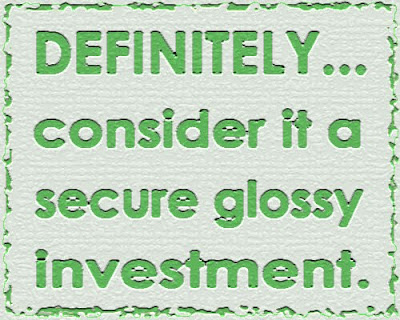
Yours truly,
Lucy & Erica @ Girl With a Satchel


